TECH
Dell Dimension L800R 800EB MHz – Retro PC for Gaming, Collectors & Projects
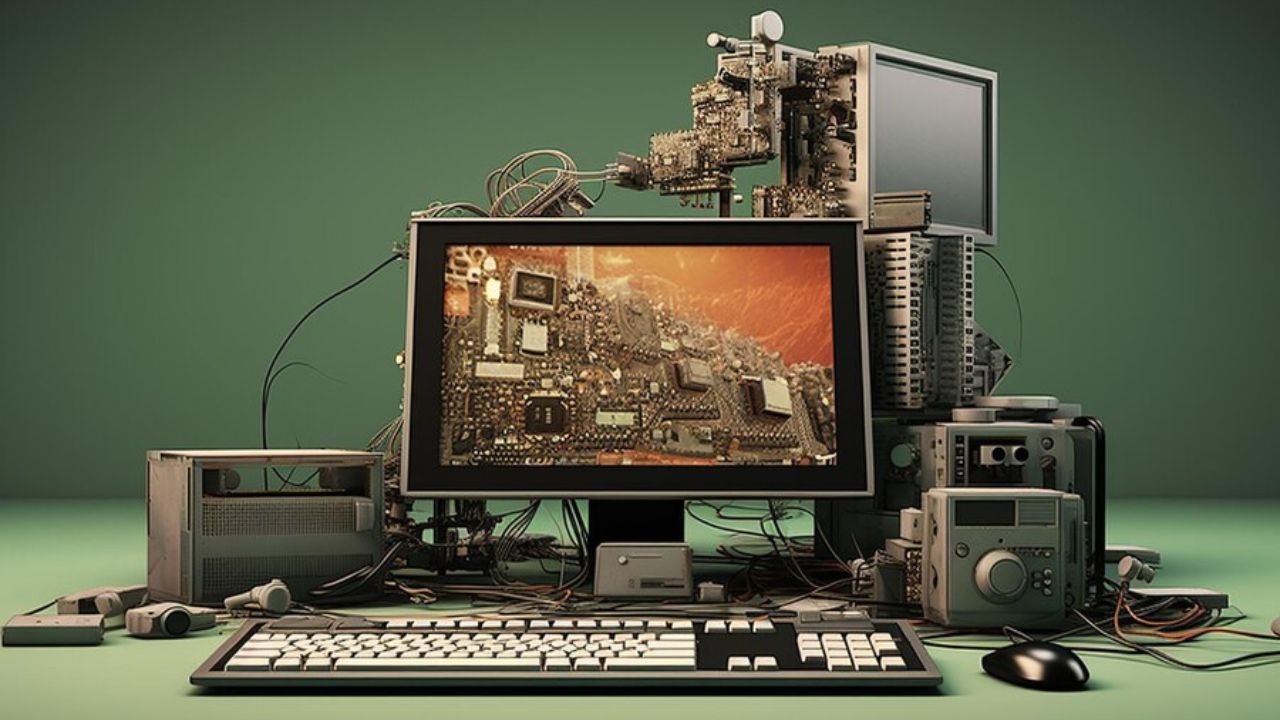
The Dell Dimension L800R 800EB MHz is more than just a computer—it’s a time machine! This retro PC from the early 2000s is a beloved gem for collectors, vintage gaming fans, and tech enthusiasts. Whether you’re reminiscing about the days of dial-up internet, digging into old-school gaming, or experimenting with hardware mods, this machine holds a special place in the history of personal computing.
Let’s unpack everything that makes the Dell Dimension L800R one of the most desirable machines for vintage tech lovers. By the end of this article, you’ll understand why this PC has transcended its purpose to become a collector’s dream.
A Blast From the Past – The Dell Dimension L800R 800EB MHz Unveiled
The Dell Dimension L800R debuted during an incredible time in tech evolution. 2001 wasn’t just the era of Napster and early social media experiments—it was also a turning point for computers entering mainstream homes for both work and play.
Here’s what made the Dell Dimension L800R stand out during its heyday:
- Processor: Powered by the Intel Pentium III, clocking in at 800 MHz, this computer delivered reliable performance for projects, gaming, and work. At the time, it was nothing short of cutting-edge.
- Operating System: Many units came pre-installed with Windows ME (Millennium Edition) or Windows 98 SE—a boon for gamers running older titles optimized for these operating systems.
- Upgradeable Design: The L800R was designed with hobbyists in mind. It had expansion bays and accessible hardware, making it surprisingly mod-friendly for its time.
This was a PC designed for versatility—and that same versatility is part of why it’s earned its place in today’s vintage gaming scene!
Why Gamers Love the Dell Dimension L800R 800EB MHz
Gamers. Understandably. Are obsessed.
The Dimension L800R is perfect for those looking to relive the golden age of PC gaming. Think Half-Life, Quake III Arena, The Sims, and StarCraft. These iconic titles run effortlessly on this machine, delivering authentic retro gaming experiences that modern systems just can’t replicate.
What Makes This a Retro Gaming Powerhouse?
- Native Support for Older Games
Modern PCs struggle to run legacy software due to compatibility issues with newer operating systems and hardware. The L800R eliminates this hassle with its period-appropriate architecture, offering native support for those classics you’ve been craving.
- Graphics Capability
Many Dell Dimension L800R models offered AGP (Accelerated Graphics Port) slots ideal for upgrading to era-appropriate GPUs like the Nvidia GeForce2 MX—the stuff that made ’90s and early ’00s gamers weak in the knees!
- Immersion Through True Hardware
Running games on hardware they were originally optimized for ensures gameplay without emulation-induced hiccups. Lag-free and flawless graphics rendering? Yes, please!
A Collector’s Dream Come True
The Dell Dimension L800R is much more than a nostalgia trip; it’s a tangible slice of early 2000s history. For collectors, having an L800R is akin to owning a vintage car from an era-defining moment in automotive evolution. Its clean lines, retro design, and era-authentic hardware make it a showpiece that stands out in any tech collection.
But what really elevates this PC’s status for enthusiasts?
- Durability
Despite being over two decades old, many Dimension L800R systems are still in working condition today. Dell built these machines to last, which makes them incredibly appealing to collectors who prioritize both aesthetics and functionality.
- Mod-Friendly Design
This PC is a sandbox for tinkerers. Want to install a PCI sound card for peak audio performance? Swap in extra RAM to boost speed? Or give it some modern flair with RGB lights? The Dimension’s accessible chassis invites endless customization.
- Historical Relevance
The Dimension line represents a bridge between the early clunky PCs of the ’90s and the sleek machines we use today. Owning one is like holding a piece of tech evolution—a marker of how far we’ve come.
Unlimited Project Possibilities
Whether you’re a hardware hacker, software enthusiast, or electronics newbie, the Dell Dimension L800R is a blank canvas for projects. Here’s how users are breathing new life into this retro PC:
Hardware Mods
The passion for revamping older PCs is on fire. People are swapping out old floppy drives for modern SSDs, upgrading RAM to squeeze out more speed, and even overclocking the Pentium III processor!
DIY Media Servers
Some hobbyists use the sturdy L800R frames to create home media centers or Plex servers. Its mod-friendly design and nostalgic appearance make it a fun and functional piece of living-room tech.
Linux Installations
Since the Dimension L800R runs lightweight Linux distros like Ubuntu or Debian with ease, tech enthusiasts are using the machine as a way to get hands-on experience running servers or practicing cybersecurity skills.
Buying, Restoring, and Preserving a Dell Dimension L800R 800EB MHz
If you’re ready to buy or restore an L800R, here’s what you need to know:
Where to Buy
eBay and local thrift shops are go-to sources for finding Dell Dimension systems. Expect to pay anywhere between $50–$150 depending on condition and included components.
Specialty vintage tech forums are also great resources to connect with like-minded enthusiasts and trusted sellers.
What to Look For
- Working Components – Ensure the processor, motherboard, and RAM are functional. Replacing original parts can be pricey.
- Cosmetic Condition – Look out for cracks, scratches, or discoloration, though minor blemishes can add charm to a retro aesthetic.
- Original Accessories – Systems with original peripherals (keyboards, mice, and monitors) are more valuable to collectors.
Preservation Tips
- Keep it Cool – Like all vintage devices, the L800R benefits from good airflow. Clean out dust and use fans to keep hardware cool.
- Backup Important Data – Install period software along with files, but back them up regularly to avoid irreversible loss.
- Document Mods Carefully – If you’ve made adjustments to the machine, log them meticulously for future enthusiasts or potential resale.
Relive the Magic of Early 2000s Computing
The Dell Dimension L800R 800EB MHz is more than just a retro PC—it’s a gateway to a golden era of computing, gaming, and creativity. Whether you’re using it to relive old memories, experiment with mods, or simply showcase it as part of your collection, this machine is a true celebration of tech progress.
Take a step back in time, fire up Age of Empires, and immerse yourself in the essence of computing nostalgia. There’s no better way to relive the legacy of early 2000s tech than with a Dell Dimension L800R at your side.
TECH
Do You Need a VPN? Pros, Cons, and How They Work
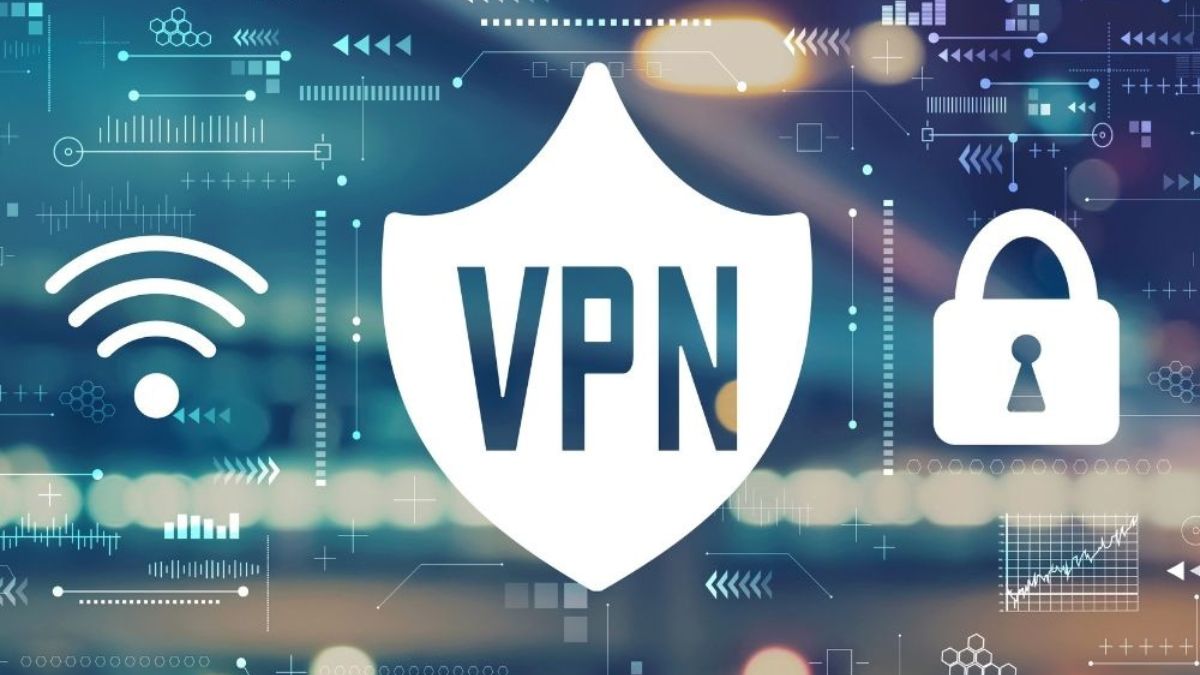
A Virtual Private Network (VPN) is often talked about as a must-have for online security and privacy. But do you actually need one? Some people use VPNs to hide their browsing activity, while others rely on them to access content that’s blocked in their country. Businesses use them to secure remote work connections, and some just want to stop their internet provider from tracking them.
If you’re wondering whether a VPN is right for you, this guide breaks down how they work, when they’re useful, and what to consider before using one.
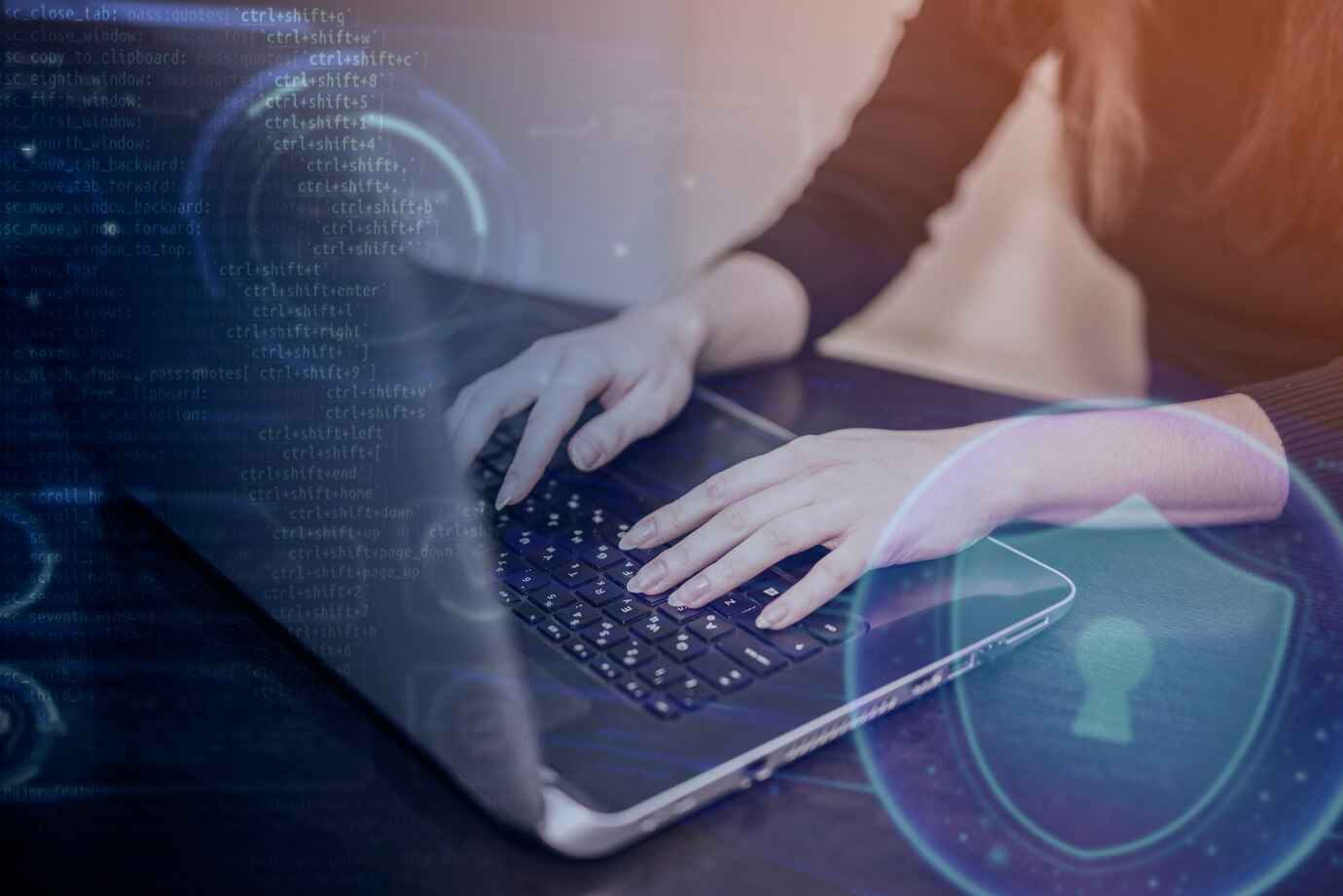 How a VPN Works
How a VPN Works
A VPN acts like a middleman between your device and the internet. Instead of connecting directly to a website or an app, your data first passes through a secure server, which hides your real location and encrypts your internet traffic. This makes it much harder for anyone—whether it’s your internet service provider (ISP), hackers, or even advertisers—to see what you’re doing online.
When you connect to a VPN, your device forms a secure tunnel to a server, usually in another part of the world. All the data you send and receive is scrambled so that even if someone intercepts it, they wouldn’t be able to read it. The website or service you’re accessing will only see the VPN’s location, not yours. This is why many people use VPNs to bypass content restrictions.
Encryption and Security
Encryption is what keeps your data private when using a VPN. Most providers use AES-256 encryption, which is nearly impossible to crack. But encryption alone isn’t enough—VPNs also rely on different protocols to manage how your data moves through the network. Some are built for security, while others focus on speed.
Common VPN protocols include:
- OpenVPN – Reliable and secure, works on most devices.
- IKEv2/IPsec – Good for mobile devices because it handles network changes well.
- WireGuard – A newer option that balances speed and security.
- L2TP/IPsec – Decent security but slower than others.
- PPTP – One of the oldest protocols, but it’s no longer considered safe.
Reasons People Use VPNs
VPNs aren’t just for privacy. They solve different problems depending on how you use the internet.
1. Keeping Data Private
When you connect to a public Wi-Fi network at a coffee shop or an airport, your data is exposed. Hackers can intercept it, and some Wi-Fi providers even collect browsing data to sell to advertisers. A VPN blocks this by encrypting your connection, making it unreadable to anyone trying to snoop.
2. Hiding Online Activity
ISPs can track every website you visit. They often use this information to create targeted ads or even slow down certain types of traffic, like streaming or gaming. A VPN stops them from doing this by masking your browsing history.
Online advertisers also track users through cookies and other data-collection methods. While a VPN won’t block all of these, it makes it harder for companies to create detailed profiles of your online habits.
3. Accessing Blocked Content
Streaming services and websites restrict access based on location. If you’ve ever tried to watch a show that’s only available in another country, you’ve seen this firsthand. A VPN lets you change your virtual location, tricking the service into thinking you’re somewhere else.
This also helps people in countries where the government censors certain websites. By connecting through a VPN server in a different country, they can bypass restrictions and use the internet freely.
4. Avoiding ISP Throttling
Some internet providers intentionally slow down certain activities, like streaming, gaming, or file-sharing. Because a VPN hides what you’re doing, your ISP can’t selectively reduce your speed based on your activity.
5. Secure Remote Work
For businesses, VPNs are a standard security tool. They allow employees to connect to company networks from anywhere without exposing sensitive data. However, many organizations deal with VPN connection issues, which can be caused by slow networks, incorrect settings, or firewalls blocking the connection. Resolving these problems is essential to maintaining secure remote access.
Things to Consider Before Using a VPN
While VPNs are useful, they’re not perfect. There are some downsides and situations where a VPN might not be necessary.
1. Slower Internet Speeds
Because a VPN routes your data through an extra server, it can slow down your connection. The impact depends on factors like the distance to the server, the encryption level, and how crowded the VPN’s network is. Some providers are faster than others, but there’s usually some drop in speed.
2. Not Every Service Works With a VPN
Streaming platforms and banks often block VPNs. Services like Netflix and Hulu actively detect and restrict VPN traffic to enforce licensing agreements. Some banks may also flag logins from VPNs as suspicious and block access.
3. Free VPNs Can Be Risky
A lot of free VPNs make money by tracking and selling user data, which defeats the purpose of using one in the first place. Others have weak security or even contain malware. If you want privacy, it’s better to use a reputable paid service.
4. VPNs Are Illegal in Some Countries
VPNs are banned or restricted in places like China, Russia, and the UAE. Using one in these countries can lead to fines or other legal trouble. If you travel frequently, check the laws before relying on a VPN.
Types of VPNs
Not all VPNs work the same way. There are different types, each designed for specific needs.
1. Remote Access VPNs
This is the type most people use. It lets individuals connect to a private network from anywhere. It’s useful for both personal security and remote work.
2. Site-to-Site VPNs
Businesses use these to connect multiple office locations over the internet. Instead of employees using their own VPNs, the company network itself is linked securely.
3. Cloud-Based VPNs
Cloud-based VPNs work similarly to traditional VPNs but are hosted in the cloud. They are often used alongside cloud-based MDM platforms, which allow IT teams to manage and secure company devices remotely. By combining a VPN with an MDM system, businesses can enforce security policies while ensuring employees have secure internet access.
How to Choose the Right VPN
Picking a VPN depends on what you need. Some are better for privacy, while others focus on speed or streaming access. Here’s what to look for:
- Strong security – Encryption, a no-logs policy, and leak protection.
- Good server locations – The more, the better for accessing blocked content.
- Fast speeds – Some providers have better performance than others.
- Device support – Check if it works on your operating system and router.
- User-friendly apps – A complicated VPN can be frustrating to use.
Should You Use a VPN?
It depends on your online habits. If privacy, security, and unrestricted access matter to you, a VPN is a good tool to have. But it’s not a magic solution. For businesses, they’re essential for protecting remote workers, though managing them properly is key. Organizations that require employees to connect through a VPN should also have a plan in place for dealing with VPN connection issues to avoid disruptions.
Conclusion
A VPN can be a solid choice if privacy, security, or unrestricted access to content is a priority for you. It keeps your data encrypted, hides your online activity, and helps bypass restrictions. But it’s not always necessary, and it’s not without its drawbacks. Slower speeds, blocked services, and the risks of using free VPNs are all things to consider. For businesses, VPNs are critical for secure remote work, but VPN connection issues can be a hassle if not properly managed. Whether or not you need one depends on what you do online, but if you decide to use a VPN, picking a reliable service is what matters most.
TECH
Bold2FA: The Future of Digital Authentication
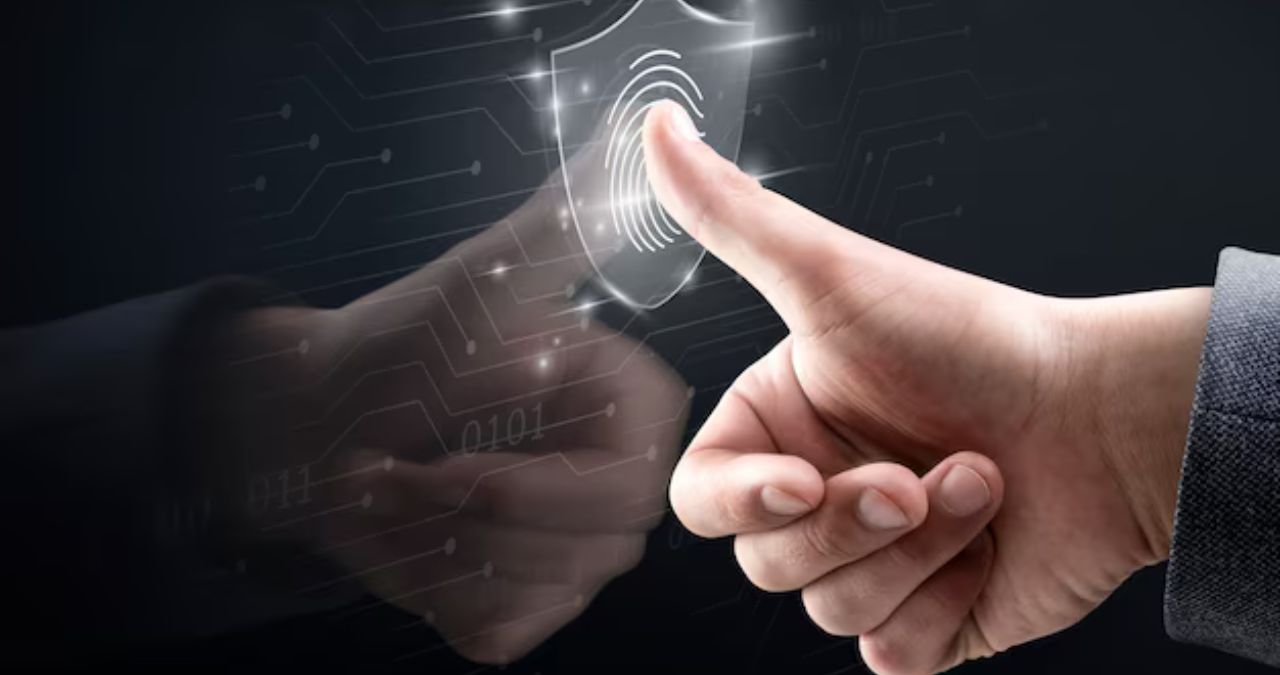
In an increasingly digital world, where our personal and professional lives are intertwined with online platforms, the need for robust security measures has never been greater. Passwords alone are no longer sufficient to protect sensitive information from cyber threats. Enter Bold2FA, a revolutionary approach to digital authentication that promises to redefine how we secure our online accounts and data. In this article, we will explore what Bold2FA is, how it works, its benefits, and why it is poised to become the future of digital authentication.
What is Bold2FA?
Bold2FA, or Bold Two-Factor Authentication, is an advanced security protocol that enhances traditional two-factor authentication (2FA) methods by incorporating cutting-edge technologies such as biometrics, behavioral analytics, and decentralized identity systems. Unlike conventional 2FA, which typically relies on a combination of passwords and one-time codes sent via SMS or email, Bold2FA leverages multiple layers of verification to provide a more secure and user-friendly authentication experience.
The name “Bold” reflects the platform’s commitment to bold innovation in the field of digital security, offering a solution that is not only highly secure but also adaptable to the evolving needs of users and organizations.
How Does Bold2FA Work?
Bold2FA operates on a multi-layered authentication framework that combines several verification methods to ensure maximum security. Here’s a breakdown of how it works:
- Primary Authentication (Something You Know)
The first layer of Bold2FA involves traditional authentication methods, such as a password or PIN. While this step is familiar to most users, Bold2FA enhances it by integrating pass wordless options, such as security questions or pattern-based authentication. - Secondary Authentication (Something You Have)
The second layer introduces a physical element, such as a smartphone, hardware token, or smart card. Bold2FA goes beyond traditional 2FA by supporting advanced options like QR code scanning, NFC-based authentication, and Bluetooth-enabled devices. - Tertiary Authentication (Something You Are)
The third layer incorporates biometric verification, such as fingerprint scanning, facial recognition, or voice authentication. Bold2FA uses state-of-the-art biometric technologies to ensure accuracy and prevent spoofing. - Behavioral Analytics (Something You Do)
Bold2FA takes authentication a step further by analyzing user behavior, such as typing patterns, mouse movements, and device usage. This layer adds an additional level of security by detecting anomalies that may indicate unauthorized access. - Decentralized Identity Verification
Bold2FA integrates decentralized identity systems, such as blockchain-based authentication, to eliminate the need for centralized databases that are vulnerable to hacking. This approach ensures that user data remains secure and private.
Benefits of Bold2FA
Bold2FA offers a wide range of benefits that make it a superior alternative to traditional authentication methods. Here are some of the key advantages:
1. Enhanced Security
By combining multiple layers of verification, Bold2FA significantly reduces the risk of unauthorized access. Even if one layer is compromised, the additional layers provide robust protection against cyber threats.
2. User-Friendly Experience
Bold2FA is designed with user convenience in mind. Features like biometric authentication and pass wordless options streamline the login process, making it faster and more intuitive.
3. Adaptability
Bold2FA is highly adaptable and can be customized to meet the specific needs of different industries and use cases. Whether you’re securing a banking app, a corporate network, or a healthcare platform, Bold2FA can be tailored to fit your requirements.
4. Fraud Prevention
The integration of behavioral analytics and decentralized identity systems makes Bold2FA highly effective at detecting and preventing fraudulent activities. This is particularly important for industries like finance and e-commerce, where fraud is a major concern.
5. Compliance with Regulations
Bold2FA helps organizations comply with data protection regulations, such as GDPR and CCPA, by ensuring that user data is securely stored and processed. This reduces the risk of legal penalties and reputational damage.
6. Future-Proof Technology
As cyber threats continue to evolve, Bold2FA is designed to stay ahead of the curve. Its modular architecture allows for the integration of new technologies and security measures as they emerge.
Applications of Bold2FA
Bold2FA has a wide range of applications across various industries. Here are some examples of how it can be used:
1. Banking and Finance
In the banking sector, Bold2FA can be used to secure online banking platforms, mobile apps, and ATM transactions. Its multi-layered authentication ensures that sensitive financial data remains protected.
2. Healthcare
Bold2FA can enhance the security of electronic health records (EHRs) and telemedicine platforms, ensuring that patient data is accessible only to authorized personnel.
3. E-Commerce
For e-commerce platforms, Bold2FA can protect user accounts, payment information, and transaction data, reducing the risk of fraud and enhancing customer trust.
4. Corporate Networks
Bold2FA can be used to secure corporate networks, remote access systems, and cloud-based applications, ensuring that only authorized employees can access sensitive company data.
5. Government Services
Government agencies can use Bold2FA to secure online services, such as tax filing, social security, and voter registration, protecting citizens’ personal information from cyber threats.
The Future of Digital Authentication with Bold2FA
As digital transformation accelerates, the need for secure and user-friendly authentication solutions will only grow. Bold2FA is poised to lead the way in this evolution, offering a comprehensive and future-proof approach to digital security. Here are some trends that Bold2FA is likely to influence in the coming years:
1. Pass wordless Authentication
Bold2FA’s support for pass wordless options aligns with the growing trend toward eliminating passwords altogether. This shift will make authentication more convenient and secure for users.
2. Biometric Advancements
As biometric technologies continue to improve, Bold2FA will integrate more advanced features, such as vein pattern recognition and gait analysis, further enhancing security.
3. Decentralized Identity Systems
The adoption of decentralized identity systems, such as blockchain-based authentication, will become more widespread, and Bold2FA will play a key role in this transition.
4. AI-Driven Security
Bold2FA will leverage artificial intelligence to enhance behavioral analytics, enabling real-time detection of suspicious activities and proactive threat prevention.
5. Cross-Industry Adoption
As awareness of Bold2FA’s benefits grows, its adoption will expand across industries, from education and entertainment to transportation and logistics.
Challenges and Considerations
While Bold2FA offers numerous advantages, its implementation is not without challenges. Organizations must consider factors such as cost, user adoption, and integration with existing systems. Additionally, the use of biometric data raises privacy concerns that must be addressed through transparent policies and robust data protection measures.
Conclusion
Bold2FA represents the future of digital authentication, offering a secure, user-friendly, and adaptable solution for protecting online accounts and data. By combining multiple layers of verification, advanced technologies, and decentralized identity systems, Bold2FA addresses the limitations of traditional authentication methods and sets a new standard for digital security. As cyber threats continue to evolve, Bold2FA provides a forward-looking approach that ensures users and organizations can navigate the digital landscape with confidence. Whether you’re a business leader, a cybersecurity professional, or an everyday user, Bold2FA is a game-changer that promises to redefine how we think about online security.
TECH
FX XVR216: A Comprehensive Overview of Its Features and Benefits
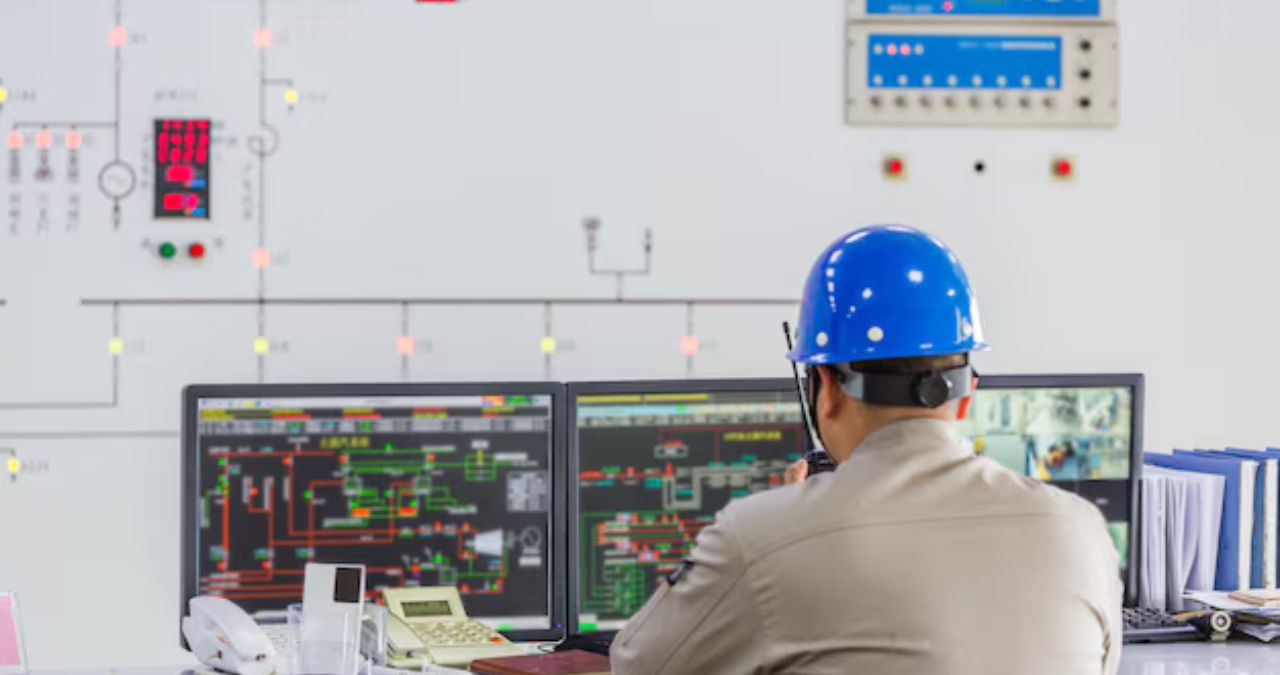
The security landscape is evolving rapidly, and businesses are seeking cutting-edge solutions to protect their assets and data. The FX XVR216 is one such versatile device, designed to streamline video surveillance while delivering superior performance. But what makes it stand out? This guide explores the FX XVR216’s features, its benefits, and why it’s an ideal choice for businesses and organizations looking to enhance their security infrastructure.
Whether you’re an enterprise or small business owner, get ready to understand what the FX XVR216 truly brings to the table.
What Is the FX XVR216?
The FX XVR216 is a hybrid video recorder designed to provide seamless compatibility between analog and IP cameras. This makes it a future-proof solution, as businesses can maintain existing analog systems while transitioning to IP-based security networks. Combining cutting-edge technology with ease of use, it has quickly become a popular choice among professionals in the security sector.
But why does this distinction matter? Analog systems are often cost-effective, while IP-based systems deliver superior image quality and additional features. The FX XVR216 blends the best of both worlds, ensuring that businesses do not have to compromise when upgrading their surveillance equipment.
Key Features of the FX XVR216
1. Hybrid Functionality
The FX XVR216 works seamlessly with both analog and IP cameras. It supports up to 16 channels, giving users the flexibility to monitor multiple areas without investing in separate devices for different camera types. This hybrid capability is particularly attractive for businesses with existing analog systems who want to gradually incorporate advanced IP cameras.
2. 4K Ultra HD Resolution Support
Clarity is crucial when it comes to security footage. The FX XVR216 supports 4K Ultra HD output for crystal-clear recordings, ensuring that no detail goes unnoticed. This feature is particularly useful for organizations requiring highly detailed footage for forensic purposes, such as retail businesses, banks, and government facilities.
3. H.265+ Video Compression
Efficient storage without compromising video quality is essential. The FX XVR216 utilizes H.265+ video compression technology, which reduces file sizes significantly compared to standard H.264 compression. This allows organizations to store more footage without increasing storage costs, all while maintaining high-quality recordings.
4. AI-Powered Smart Features
One of the standout elements of the FX XVR216 is its AI-powered analytics. It includes features like facial recognition, object detection, and perimeter protection, making it easier to identify potential security threats in real time. These proactive capabilities add an extra layer of reliability and protection.
5. Remote Access and Mobile Integration
The FX XVR216 offers intuitive remote access through its dedicated mobile app and web client. This means users can monitor live footage or review recordings from anywhere in the world. With push notifications for motion detection or predefined alerts, security teams stay informed, no matter where they are.
6. User-Friendly Interface
Adopting sophisticated technology can be daunting, but the FX XVR216 ensures a smooth transition with its simple and user-friendly interface. The clean design and easy navigation minimize the learning curve, allowing security personnel to operate it efficiently with minimal training.
Benefits of Using the FX XVR216
Future-Proof Scalability
By supporting both analog and IP cameras, the FX XVR216 allows businesses to migrate to advanced solutions at their own pace. There’s no urgent need to replace all analog systems upfront, leading to significant cost savings.
Enhanced Security
With 4K resolution and intelligent AI analytics, the FX XVR216 helps businesses maintain a robust security framework. Facial recognition, for example, ensures that only authorized personnel gain access to certain areas, while perimeter detection deters intrusions before they escalate.
Cost-Effective Operation
The H.265+ video compression reduces the need for excessive storage capacity. Plus, hybrid functionality lowers hardware investment costs by consolidating analog and IP camera systems. These features make it a cost-efficient choice for businesses of all sizes.
Flexibility and Mobility
Remote monitoring ensures that security isn’t confined to one location. Whether you’re offsite or managing multiple locations, the FX XVR216 ensures that surveillance footage is always accessible via the app or web client.
Increased Productivity Through Automation
Thanks to its AI-powered features, the FX XVR216 automatically identifies and alerts users of potential issues. This reduces the need for constant manual surveillance and allows security teams to focus on priority tasks.
Use Cases for the FX XVR216
Retail Businesses
Retail stores can use the FX XVR216 to monitor customer behavior, deter shoplifting, and secure inventory. With AI-powered analytics, such as people counting or heat mapping, businesses can also gain insights into customer traffic to improve sales strategies.
Warehouses and Logistics Centers
Keeping warehouses and logistics hubs safe is critical. The FX XVR216’s ensures that all entry points, loading docks, and storage areas are monitored, with AI features detecting unauthorized accesses even in busy environments.
Office Buildings
For office environments, the FX XVR216’s can ensure access control through facial recognition while keeping parking lots, lobbies, and workspaces secure with its high-definition resolution and motion detection alerts.
Educational Institutions
Schools and universities can use the FX XVR216’s to enhance campus safety. By monitoring hallways, entries, and outdoor spaces, the device helps staff respond quickly to emergencies and maintain student safety.
Is the FX XVR216 Right For Your Needs?
The FX XVR216’s is suitable for any organization looking to improve security, reduce operational costs, and incorporate advanced technology into their surveillance systems. Its hybrid functionality, AI-driven analytics, and support for 4K resolution enable businesses to create a future-proof system without a hefty initial investment.
When evaluating a video recorder for your security needs, consider factors such as the size of your operation, the type of cameras currently in use, and required features like remote monitoring or AI analytics.
Final Thoughts
The FX XVR216 stands out as a versatile, cost-effective, and future-ready device for businesses seeking to stay ahead in security technology. With its hybrid compatibility, AI-powered features, and user-friendly interface, it’s a smart investment that can grow alongside your organization.
If you’re ready to elevate your security infrastructure, begin your FX XVR216’s experience today. Contact us to learn more or schedule a personalized demo suited to your specific business needs.
-

 BLOG2 months ago
BLOG2 months agoIZoneMedia360 .Com: Exploring the Features and Benefits
-

 BLOG5 months ago
BLOG5 months agoAbout Blog TurboGeekOrg: A Go-To Hub for Tech Enthusiasts and Latest Innovations
-

 BLOG5 months ago
BLOG5 months agoWhat is a Golden Transit in Magi Astrology?
-

 BLOG2 months ago
BLOG2 months agoA Complete Guide to ProcurementNation.com Shipping
-

 ENTERTAINMENT5 months ago
ENTERTAINMENT5 months agoTyquaez Pickett: A Rising Star in the Entertainment World
-

 NEWS1 month ago
NEWS1 month agoChloe Berger News: Insights on Employee Rights and Talent Retention
-

 HOME2 months ago
HOME2 months ago5StarsStocks.com Nickel: Invest for a Bright Future
-

 BLOG4 months ago
BLOG4 months agoWho Is Hall Sinclair? The True Story of Olivia Colman’s Son
